-
Battery technology would charge up water desalination
A new technology, which charges batteries for electronic devices, could provide fresh water from salty seas, says a new study. Electricity running through a salt water-filled battery draws the salt ions out of the water.
-
-
Helping to optimize grid
The nation’s electric power grid is becoming more complex. As the system incorporates more sources of renewable energy, such as solar and wind power, utilities need new ways to manage it more efficiently, and the U.S. Department of Energy’s (DOE’s) Argonne National Laboratory says it is responding to that need.
-
-
FBI launches investigation of lead poisoning of Flint’s drinking water
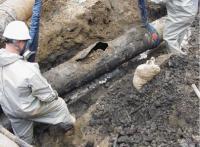
The FBI has launched an investigation into the contamination of drinking water in Flint, Michigan, which has left Flint children and other residents poisoned by lead. In a hearings on the Hill yesterday, lawmakers from both parties described what is happening in Flint as a “a man-made public health catastrophe.” Flint’s drinking water became contaminated with lead in April 2014 after a state-appointed emergency manager ordered city officials temporarily to switch the city’s water source from Lake Huron water treated by the Detroit Water and Sewerage Department to water from the Flint River, treated at the Flint water treatment plant. The order by the state-appointed emergency manager was part of the state’s cost-cutting measures.
-
-
In kids, even low lead levels can cause lasting harm
Until a few years ago, the federal standard for action was 10 micrograms per deciliter of blood, and in 2012 it was lowered by half in recognition of evidence showing a lower threshold of concern. But the truth is there is no known safe level of blood lead for children, and the American Academy of Pediatrics and the Centers for Disease Control and Prevention have said as much. The medical research community has documented negative impacts on children with even lower levels of lead exposure than the current 5 micrograms per deciliters standard. With that view, we might consider every child with a confirmed nonzero lead test as at-risk. Testing lead blood levels in children is simply too late. This is akin to the TSA searching for lethal weapons after the passengers have boarded the flight and the plan has taken off. Once the lead is in the bloodstream, the damage is real and lasting for these children, and the options for response are far fewer and less effective. Children living in low-income neighborhoods, children of color, and children whose families live in rental housing are statistically at the greatest risk of exposure to lead. That means the children most at risk of lead exposure also disproportionately face the effects of poverty, low-resource communities, and trauma.
-
-
Realistic data needed to develop the 21st century power grid

Say you have a great new theory or technology to improve the nation’s energy backbone — the electric grid. Would it not be great to test it against a model complete with details that would tell you how your ideas would work? But it is a challenge, because existing sets of data are too small or outdated; and you do not have access to real data from the grid because of security and privacy issues. To overcome this problem, is helping to create open-access power grid datasets for researchers and industry.
-
-
LA, Calif. file criminal charges against SoCalGas over massive methane leak
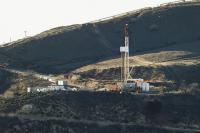
Criminal charges were filed on Tuesday against Southern California Gas, the utility company whose blown-out natural gas well forced thousands of people in the Los Angeles area to evacuate their homes. The charges claim that the company failed to report the massive leak to the authorities, as it operating license requires.Papers filed in court yesterday claim that the company allowed the release of 80,000 metric tons of methane into the atmosphere.
-
-
Making slums more resilient to climate change
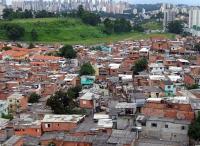
In our rapidly urbanizing world, access to sanitation, transportation, and other essential services remains a challenge for more than a billion people. In the world’s poorest and most vulnerable urban communities, finding new ways to meet these day-to-day human needs not only leads to sustainable development, it also fortifies them against the effects of climate-induced disasters.
-
-
Building cyber security testbed to help protect the power grid
It is easy to think of the electrical grid as the power plants, the high voltage lines, the transmission towers, the substations, and all the low-voltage distribution lines that bring power to our homes and businesses. An attack on that grid would involve getting out and cutting lines or dropping towers. But there is another, less visible piece to the grid — all the computers and communication networks that make it work. Attackers can go after the cyber grid, too. They can do it from a desktop. At no real cost. Potentially from anywhere in the world. With few if any clues left behind.
-
-
Flint Water Study research team to present findings on Thursday

Virginia Tech’s Marc Edwards and his team of research scientists and students will give a presentation on Thursday, 28 January, in Blacksburg to outline their work — done in collaboration with Flint, Michigan, residents — which exposed widespread lead-in-water contamination. The presentation will provide an overview of the Flint Water Study team’s efforts combining ethics engineering, citizen science, laboratory experiments, investigative science, and social media to confirm the high lead levels in Flint’s water.
-
-
Piping as poison: the Flint water crisis and America’s toxic infrastructure
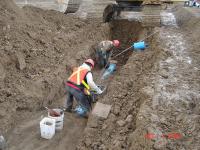
As the crisis over the water in Flint, Michigan, rolls on, we’re learning more and more about the irresponsibility and callousness of officials and politicians in charge. The mix of austerity politics, environmental racism, and sheer ineptitude makes for a shocking brew, yet the physical conditions that have made it literally toxic for Flint residents are neither as exceptional nor as recent as much of the media coverage suggests. An estimated three to six million miles of lead pipes across the United States still carry water, and most all of them are vulnerable to similar dangers, whether at the hands of short-sighted and prejudicial bureaucrats or politicians whose ideology or opportunism leads them to blithely dismiss well-established science. The best solution would be to replace our lead lines systematically and proactively, not just one crisis-beset city at a time. Until we do so, it’s a safe bet that more Flints lie on our horizon.
-
-
Rapid, affordable energy transformation in U.S. possible
The United States could slash greenhouse gas emissions from power production by up to 78 percent below 1990 levels within fifteen years while meeting increased demand, according to a new study. The study used a sophisticated mathematical model to evaluate future cost, demand, generation, and transmission scenarios. It found that with improvements in transmission infrastructure, weather-driven renewable resources could supply most of the nation’s electricity at costs similar to today’s.
-
-
De-icing concrete to improve roadway safety
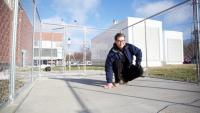
Researchers have developed a concrete which de-ices itself by adding a pinch of steel shavings and a dash of carbon particles to a traditional concrete recipe. Though the newest ingredients constitute just 20 percent of the otherwise standard concrete mixture, they conduct enough electricity to melt ice and snow in the worst winter storms while remaining safe to the touch.
-
-
Global water supply under increasing pressure
A new study projects that global demand for water could more than double by 2050, increasing pressure on already scarce water resources. “Our current water use habits increase the risk of being unable to maintain sustainable food production and economic development for the future generation,” says one researcher. Water efficiency and water saving measures could stabilize demand.
-
-
Breakthrough in continuous monitoring of CO2 leaks from carbon storage sites
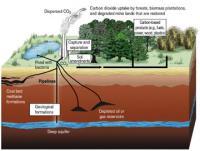
Underground storage of CO2 produced from fossil fuel burning, rather than releasing it into the atmosphere, could play an important role in suppressing climate change. Ensuring that the CO2 does not leak from the storage site is key – but the high number of surveys necessary to make sure there is no CO2 leak makes this a costly endeavor. A team of Japanese researchers may have found a means of achieving easier and lower-cost monitoring for leaks of CO2 stored in underground reservoirs.
-
-
As climate warms, Colorado high peaks lose glaciers

Melting of ice on Niwot Ridge and the adjacent Green Lakes Valley in the high mountains west of Boulder, Colorado, is likely to progress as climate continues to warm, scientists have found. Their study reveals declines in ice — glaciers, permafrost, subsurface ice, lake ice — in the Niwot Ridge area over the past thirty years. For glaciers like Arikaree, the time left may be counted in years, not centuries nor millennia, says one expert.
-
- All
- Regional
- Water
- Biometrics
- Borders/Immig
- Business
- Cybersecurity
- Detection
- Disasters
- Government
- Infrastructure
- International
- Public health
- Public Safety
- Communication interoperabillity
- Emergency services
- Emergency medical services
- Fire
- First response
- IEDs
- Law Enforcement
- Law Enforcement Technology
- Military technology
- Nonlethal weapons
- Nuclear weapons
- Personal protection equipment
- Police
- Notification /alert systems
- Situational awareness
- Weapons systems
- Sci-Tech
- Sector Reports
- Surveillance
- Transportation
Advertising & Marketing: advertise@newswirepubs.com
Editorial: editor@newswirepubs.com
General: info@newswirepubs.com
2010-2011 © News Wire Publications, LLC News Wire Publications, LLC
220 Old Country Road | Suite 200 | Mineola | New York | 11501
Permissions and Policies
Editorial: editor@newswirepubs.com
General: info@newswirepubs.com
2010-2011 © News Wire Publications, LLC News Wire Publications, LLC
220 Old Country Road | Suite 200 | Mineola | New York | 11501
Permissions and Policies
